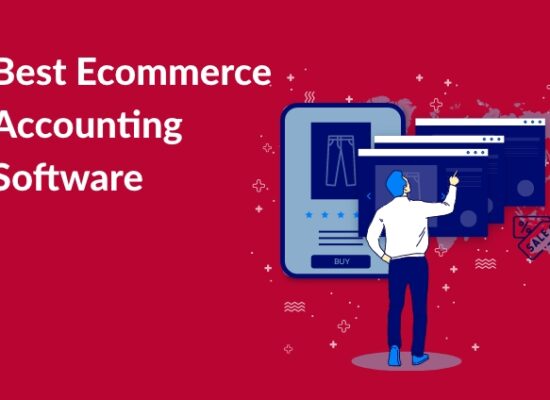
Ever wondered how people make money online without ever handling products? Enter the world of affiliate marketing and dropshipping, two popular paths to e-commerce success.
If you’re a fitness enthusiast, with affiliate marketing, you can partner with a fitness brand, promote their products on your blog or social media, and earn a commission for every sale made through your unique referral link. Alternatively, picture yourself running an online store selling trendy gadgets without ever worrying about inventory or shipping, that’s the magic of dropshipping.
Let’s dive into affiliate marketing vs. dropshipping to find the best business model for you.
Affiliate Marketing vs Dropshipping
Over the past two decades, the ecommerce business has grown remarkably due to changes in consumer tastes, growing internet usage, and technological developments. Another important factor has been mobile shopping, with smartphones emerging as the go-to device for internet purchases. Therefore, it is anticipated that the e-commerce sector will continue to grow quickly in the years to come, with new developments like blockchain technology, AI-driven personalization, and AR/VR experiences further influencing its environment.
In the digital age, two creative business strategies that have garnered a lot of support are affiliate marketing and dropshipping business. By referring people to products or services, you can promote them and get paid a commission for each sale or lead that results from your reference. It’s possible for people and companies to generate passive income without having to produce or stock goods by utilising already-existing audiences and networks.
Conversely, dropshipping is a retail fulfilment strategy in which the seller sends client orders and shipment information to a third-party supplier, who distributes the goods straight to the consumer, rather than keeping inventory on hand. Dropshipping and affiliate marketing are attractive choices for budding businesses in the online market because they provide scalability, flexibility, and low overhead costs.
Read More : Print on Demand vs. Dropshipping?
Understanding Affiliate Marketing

A company that uses affiliate marketing pays one or more affiliates for each visitor or client they bring in due to their marketing efforts. Affiliate marketing is a performance-based marketing technique. In essence, affiliates get paid a commission for endorsing another business’s goods or services.
If you’re running a fitness blog. You can sign up for a firm that offers protein supplements. You review their products on your site and offer links. You get paid by the company a commission when readers click on those links and make a purchase because you referred them.
How Affiliate Marketing Works?
A company and people or other businesses collaborate to make affiliate marketing functions. A step by step process is explained here
Enrolling in an Affiliate Program:
You register in a merchant’s affiliate program. You can use the special tracking links or codes that this program gives in their advertisements.
Product or Service Promotion:
You can use a variety of platforms including blogs, websites, social media, email newsletters, and YouTube videos to advertise the merchant’s goods and services.
Increasing Traffic and Sales:
The merchant’s affiliate program tracks the information when prospective consumers click on the link or use their code to make a purchase.
Earning Commissions:
Using the predetermined commission structure, the merchant determines the commissions due by keeping track of each affiliate’s sales. Usually, commissions are paid as a fixed sum per transaction or as a percentage of the sale price.
Payment:
Once an affiliate reaches a payment threshold established by the affiliate program, or on a regular basis (such as monthly), they get compensated for their referrals.
| Advantages of Affiliate Marketing | Challenges of Affiliate Marketing |
| 1. Affiliate marketers only pay for actual sales or conversions rather than for advertising space or impressions, so retailers can afford to use affiliate marketing. | 1. There can be fierce competition in the affiliate marketing industry, particularly in well-liked niches. |
| 2. By utilizing their affiliates’ networks and platforms, retailers can reach a wider audience through affiliate marketing. | 2. Affiliates may find it difficult to gain the audience’s trust if they use dishonest marketing strategies or offer subpar goods. |
| 3. Affiliate marketing is a low-risk approach for retailers because affiliates are only compensated when successful sales or conversions occur. | 3. Affiliate marketing techniques may be impacted by regulatory changes, such as new rules controlling online advertising or data protection, necessitating adjustments. |
| 4. Rewards are directly correlated with their efforts and the outcomes they produce, so affiliates are incentivized to perform effectively. | 4. While some schemes have high sales requirements before affiliates can get paid, others may have low commission rates. |
| 5. Affiliate marketing systems are easily scalable since merchants may hire an infinite number of affiliates to market their goods or services which opens the door to potential growth. | 5. The reputation and income of the affiliate may suffer if a merchant falls short on certain obligations such as quality products and customer assistance. |
| 6. Affiliates offer goods and services through a variety of channels including blogs, websites, social media, email newsletters, and YouTube, this gives merchants exposure on a range of media. | 6. It can be difficult to track referrals and correctly credit affiliates for sales, particularly when doing so across many platforms and devices. |
| 7. Without requiring a physical presence or extra marketing resources, affiliate marketing allows merchants to reach new customers worldwide by collaborating with affiliates from various geographical areas. | 7. Seasonality, variations in customer behavior, or changes in market trends can all affect an affiliate marketer’s earnings. |
Understanding Dropshipping

A retailer who uses dropshipping no need to hold inventory of the products they sell. Rather, when a store sells anything, it buys it directly from a third party and ships it straight to the buyer. The goods are never handled or seen by the dropshipper.
If you own an internet store that sells phone accessories. Rather than maintaining inventory, you feature products from a supplier on your website. You buy the item from the supplier when a customer places an order, and the provider ships it straight to the customer. The seller’s upfront expenses and inventory management are decreased with this arrangement.
Read More : 10 Best Dropshipping Business Ideas
How Dropshipping Works?
Dropshipping operates in multiple stages. A step by step process is explained here
Establishing an Online Store:
The dropshipper lists products from suppliers in an online store they construct typically utilizing an e-commerce platform.
Locating Providers:
The dropshipper looks for providers who are prepared to dropship their goods.
Listing Products:
The dropshipper includes prices, photos, and descriptions of the products from the suppliers in their online store.
Customer Places an Order:
The dropshipper receives the order information and money from the customer who orders a product from the dropshipper’s online store.
Sending the Order to the Supplier:
After that the dropshipper sends the supplier the order, the customer’s information, and the money for the product’s wholesale cost.
Supplier Ships the Product:
The supplier packages and ships the product straight to the consumer.
Profit:
The dropshipper makes money by keeping the difference between what the supplier gets paid in wholesale prices and what the client pays at retail.
Read More : Best Dropshipping Websites to Skyrocket Your Online Business
| Advantages of Dropshipping | Challenges of Dropshipping |
| 1. Compared to typical retail models, the initial investment needed to launch a dropshipping business is far lower. | 1. The availability of inventory, prompt distribution, and product quality are all highly dependent upon your suppliers. |
| 2. Dropshipping frees you from inventory management restrictions, enabling you to quickly add or remove products from your store. | 2. Dropshipping removes the need for inventory storage but to guarantee correct representation to buyers, it still necessitates careful management of product listings, pricing, and availability. |
| 3. There is no chance of getting trapped with unsold goods or locking up cash in stock that might not sell when inventory is not held. | 3. In comparison to traditional retail models, dropshipping typically has lower profit margins because of heightened competition and the need to maintain a competitive edge. |
| 4. As long as you can communicate with suppliers and customers, you may operate a dropshipping business from any location with an internet connection. | 4. Depending on the supplier’s location and the shipping methods used, shipping rates and times can differ significantly. |
| 5. Since you’re not managing fulfillment or inventory, you have more time to devote to developing your website, acquiring new clients, and developing marketing plans that will increase sales. | 5. Because you might not have control over the branding or packaging of your products, dropshipping might make it more difficult to develop a strong brand identity. |
| 6. Since you won’t have to worry about transportation or storage space as your organization expands, scaling it will be simpler. | 6. Despite the fact that you might not have direct control over the goods or shipping procedure, you are the company’s representative and must respond to questions, grievances, and returns from customers. |
| 7. Dropshipping is accessible to would-be business owners with little capital or experience because it is very simple to set up in comparison to traditional retail models. | 7. It can be challenging to stand out from the competition and draw in clients without a solid USP or marketing plan. |
Key Differences Between Affiliate Marketing and Dropshipping
| Affiliate Marketing | Dropshipping | |
| Business Model | Affiliates use a variety of platforms including blogs, websites, social media, email marketing, and more, to advertise goods and services. | Dropshipping is creating an online store and offering goods to clients without keeping stock on hand. |
| Inventory Management | Product fulfillment and inventory management are not tasks that affiliates must perform. | Dropshippers are responsible for choosing what to offer and maintaining connections with suppliers that take care of shipping and inventory. |
| Start-up Expenses | Since affiliates do not have to invest in inventory, product development, or order fulfillment, affiliate marketing usually has cheap start-up expenses. | Compared to affiliate marketing, dropshipping usually has more start-up expenditures. |
| Control | The price, quality, and other factors of the product being advertised are not entirely within the affiliates’ control. | Compared to affiliates, dropshippers have more control over product selection, pricing, branding, and customer experience. |
| Customer Service | Returns, customer service, and product problems are not the affiliates’ responsibility. They just concentrate on increasing online traffic and conversions for the retailer. | Dropshippers are in charge of responding to questions, managing returns, processing orders, and handling customer support. |
Read More : 9 Best Ecommerce Business Ideas
Which Model is Right for You?
| Factors to Consider | Affiliate Marketing | Dropshipping |
| Initial Investment | Low | Moderate |
| Inventory Management | Not Required | Not Required |
| Customer Service | Not Responsible | Responsible |
| Control | Limited Control | More Control |
| Scalability | Limited | Unlimited |
| Risk | Low | High |
| Skills | Marketing, Content Creation, SEO, Relationship Building etc. | Marketing, Product Selection, Customer Service, SEO |
Affiliate Marketing
- Perfect if you have experience with relationship-building, content development, and digital marketing.
- Low initial outlay of funds qualifies it for people on a tight budget.
- Offers less risk and scalability in exchange for less control over the products and customer experience.
Dropshipping
- Ideal for people with an interest in customer service, product selection, and e-commerce.
- Requires a moderate to large upfront expenditure for marketing, merchandise, and online store setup.
- Gives greater control over branding, pricing, and products, yet it comes with more risk and demands supplier relationship management.
Choose Affiliate or dropshipping according to your choice
Successful online income-generating options for budding entrepreneurs are provided by dropshipping and affiliate marketing. Although their digital nature and scalability are comparable but their business structures, control levels, and investment requirements are very different.
The decision between dropshipping and affiliate marketing ultimately comes down to personal tastes, abilities, and financial capabilities. Whether you would rather build your own brand through dropshipping or promote existing products as an affiliate, both business models can be successful if they are approached with the correct mindset, perseverance, and awareness of the particular opportunities and challenges they present in the constantly changing online business environment.
FAQ’s
What is the difference between dropshipping and affiliate marketing?
By advertising the goods of other businesses, you can become an affiliate and get paid a commission for each sale or recommendation you make. Conversely, dropshipping is the practice of selling goods without maintaining inventory. You collaborate with a supplier who manages shipping and inventory.
Is it possible to establish a brand using dropshipping or affiliate marketing?
Yes, you can establish a brand using both approaches but dropshipping gives you greater control over the choice of products and the customer experience which opens up additional branding and customizing options.
Which business model, dropshipping or affiliate marketing offers larger profit margins?
Dropshipping typically yields larger profit margins since it allows you to control your own prices and bargain with suppliers for better terms. Your commission in affiliate marketing is usually determined by the product owner’s percentage of the selling price.
Is it feasible to integrate dropshipping and affiliate marketing into a single company plan?
It is feasible to optimize revenue potential by cross-marketing products or by promoting affiliate products that are relevant to your dropshipping specialty.
Which business model, dropshipping or affiliate marketing is more scalable in long term?
While both models are scalable, dropshipping gives you greater control over price and inventory, which may eventually lead to even greater scalability. On the other hand, extending into new niches and broadening your advertising activities are other ways to scale affiliate marketing.



